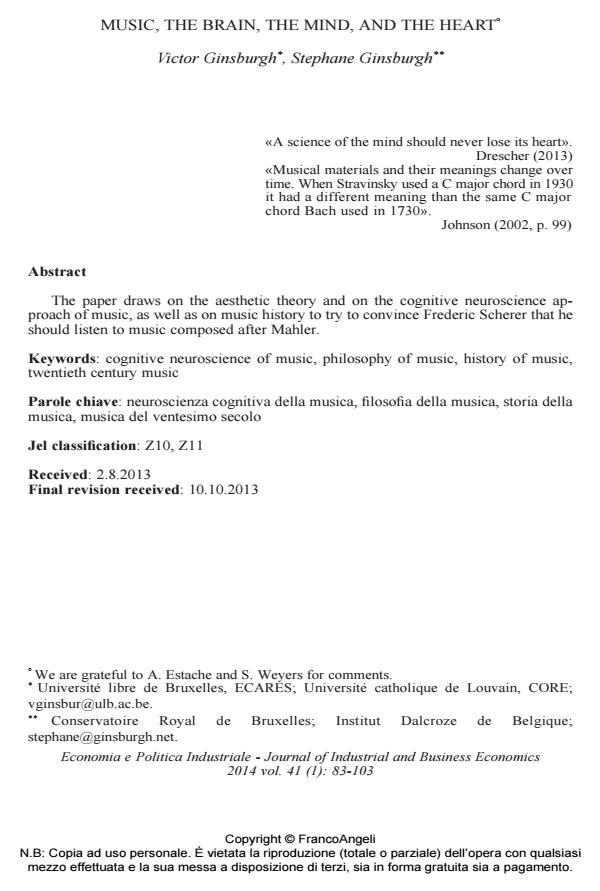Music, the brain, the mind, and the heart
Journal title ECONOMIA E POLITICA INDUSTRIALE
Author/s Victor Ginsburgh, Stephane Ginsburgh
Publishing Year 2014 Issue 2014/1
Language English Pages 21 P. 83-103 File size 71 KB
DOI 10.3280/POLI2014-001005
DOI is like a bar code for intellectual property: to have more infomation
click here
Below, you can see the article first page
If you want to buy this article in PDF format, you can do it, following the instructions to buy download credits

FrancoAngeli is member of Publishers International Linking Association, Inc (PILA), a not-for-profit association which run the CrossRef service enabling links to and from online scholarly content.
The paper draws on the aesthetic theory and on the cognitive neuroscience approach of music, as well as on music history to try to convince Frederic Scherer that he should listen to music composed after Mahler.
Keywords: Cognitive neuroscience of music, philosophy of music, history of music, twentieth century music
Jel codes: Z10, Z11
- History, statistics and theory: Frederic M. Scherer and modern industrial organization Giovanni B. Ramello, Francesco Silva, in ECONOMIA E POLITICA INDUSTRIALE 1/2014 pp.5
DOI: 10.3280/POLI2014-001001
Victor Ginsburgh, Stephane Ginsburgh, Music, the brain, the mind, and the heart in "ECONOMIA E POLITICA INDUSTRIALE " 1/2014, pp 83-103, DOI: 10.3280/POLI2014-001005